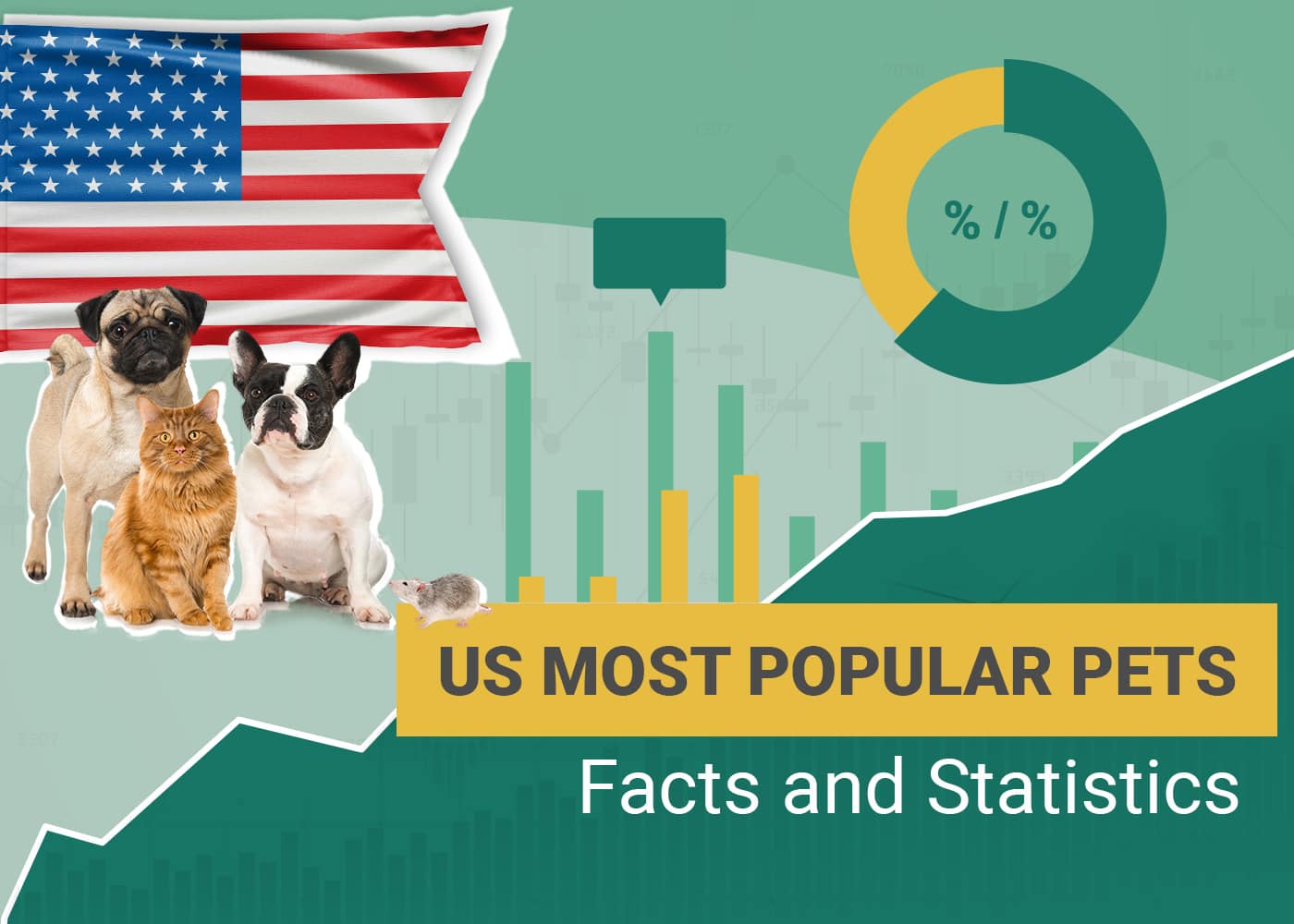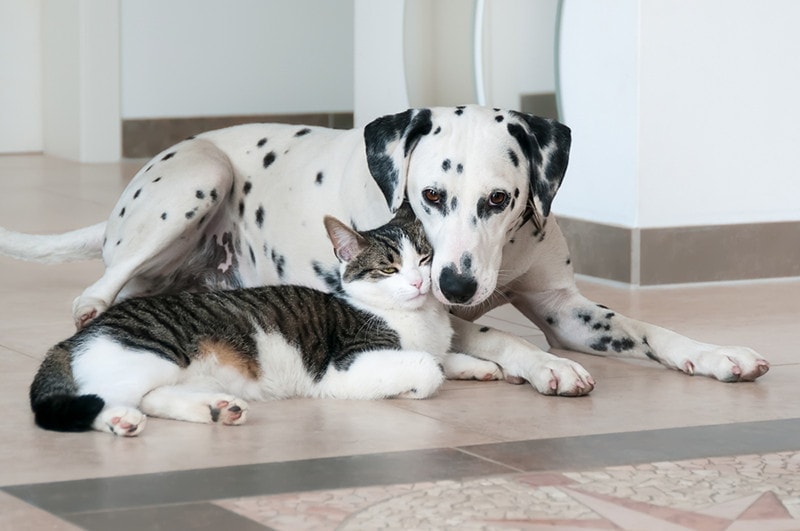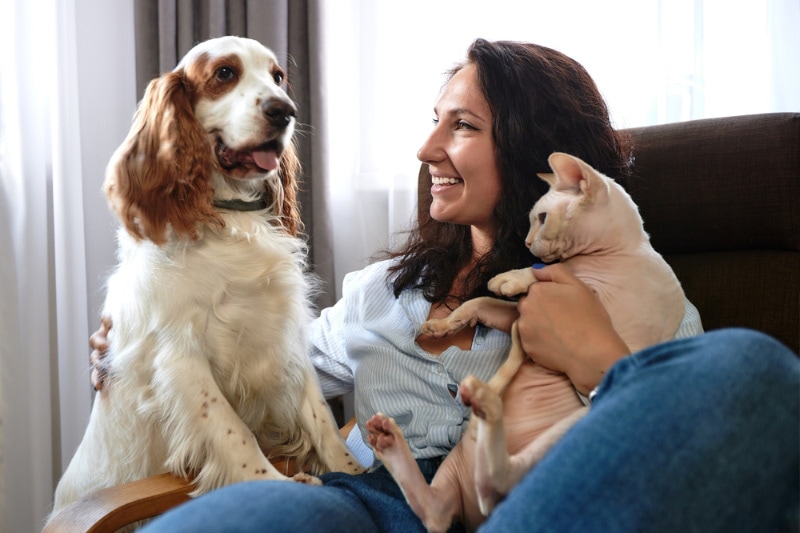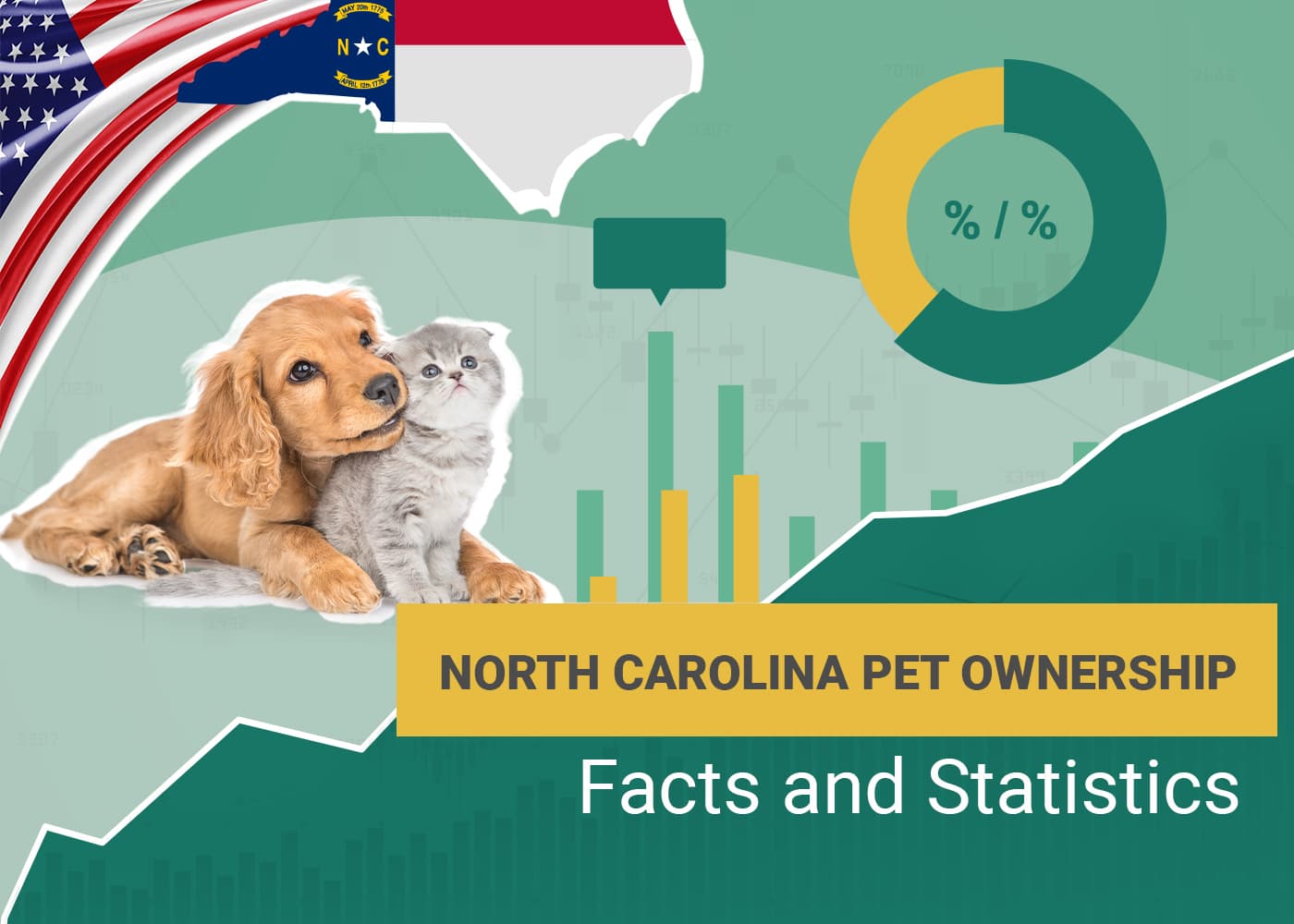Click to Skip Ahead
Note: This article’s statistics come from third-party sources and do not represent the opinions of this website.
Pet domestication is probably one of the most serendipitous things to happen to humans, and we can say the same about any of the relationships we have with domesticated animals, whether cats, dogs, ferrets, or rabbits. Our animal companions have brought so much joy into our lives that imagining life without them is almost impossible.
Much has changed from the wild animals looking for the occasional scrap around the campfire. We’ve invited pets into our homes and families, but recent statistics tell us even more about our pets and how they have affected our lives. Two of the most popular are, of course, cats and dogs. If you’re curious to learn more statistics about some popular pets, read on.
The 25 Most Popular Pet Statistics
- According to the North American Pet Health Insurance Association (NAPHIA), approximately 6.25 million pets were insured in 2023.
- According to a Survey by Get Joy, about 90% of pet owners consider their animal companions’ health good or excellent.
- Pet food costs are the highest it’s ever been, with a 24.5% inflation since 2019.
- The average cost of a routine vet visit is between $50 and $250.
- Connecticut is the most expensive state for a routine vet exam, averaging $93.
- There is one dog or cat for every 2.27 people in the United States.
- Approximately 2.7% of American households have fish.
- About 62 million American households own between 83,739,829 and 88,853,254 dogs.
- The average annual cost of owning a dog is roughly $1,270 to $2,803.
- About 73% of dog owners regularly interact with their pets to improve their well-being.
- Roughly 65% of dog owners keep up with preventive care.
- Over 67% of dog owners buy their pups a holiday gift during the Christmas season.
- About 29.5% of Delaware dog owners paint their pooches’ nails, the highest in the country.
- Approximately 66.5% of Florida dog owners spend more on grooming and healthcare for their pets than they do themselves.
- According to one study, the German Shepherd is the second most favorite breed and the top one in 16 states.
- Centrale Canine recognizes 379 dog breeds.
- Roughly 37 million American households own between 60,217,861 and 61,910,686 cats.
- The annual cost of owning a cat averages between $961 and $2,487.
- The average number of kitties owned per household is 1.78.
- The International Cat Association recognizes 73 cat breeds.
- About 85% of pet cats are neutered or spayed.
- Approximately 40% of new cat owners cited the pandemic as a reason to consider a pet.
- Forty-five percent of Vermont households have a cat.
- Experts forecast the cat litter market in the United States will reach $1.42 billion by 2025.
- The average monthly cost to insure a cat is $19.
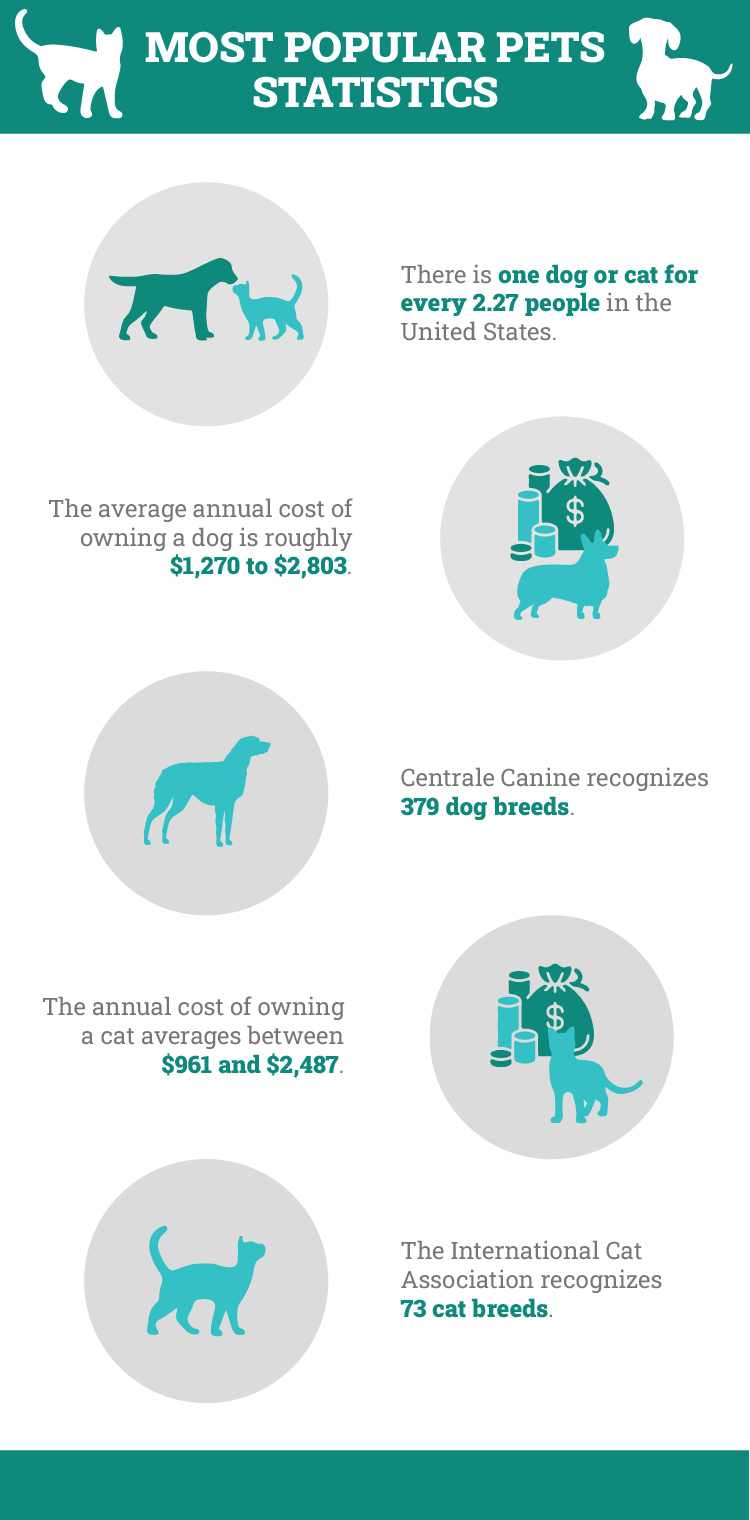
General Pet Stats
1. According to the North American Pet Health Insurance Association (NAPHIA), approximately 6.25 million pets were insured in 2023.
(NAPHIA)
The concept of pet insurance undoubtedly goes hand in hand with the humanization of the market. We don’t just want our pets to be healthy; we want them to thrive. However, professional services come at a cost. The rise of pet insurance has been a boon for caregivers. It certainly has helped with the financial burden. The number of owners getting policies will likely continue to increase.

2. According to a Survey by Get Joy, about 90% of pet owners consider their animal companions’ health good or excellent.
(Get Joy)
Pet owners consider themselves able to judge their animal companions’ health. Not that our pets always make it easy to spot a problem. Tellingly, the respondents thought their pets’ health was better than their own. That says a lot about how people prioritize their attention and resources. As pet owners ourselves, we understand the sentiment.
3. Pet food costs are the highest it’s ever been, with a 24.5% inflation since 2019.
(Pet Food Industry)
It would be odd if inflation didn’t touch the pet food industry. Nevertheless, rising costs have made pet ownership more challenging. After all, food makes up a significant chunk of a caregiver’s annual expenses. Surprisingly, up until the beginning of 2024, “petflation” was higher than the national consumer price index (CPI). Only recently have things settled down a bit.
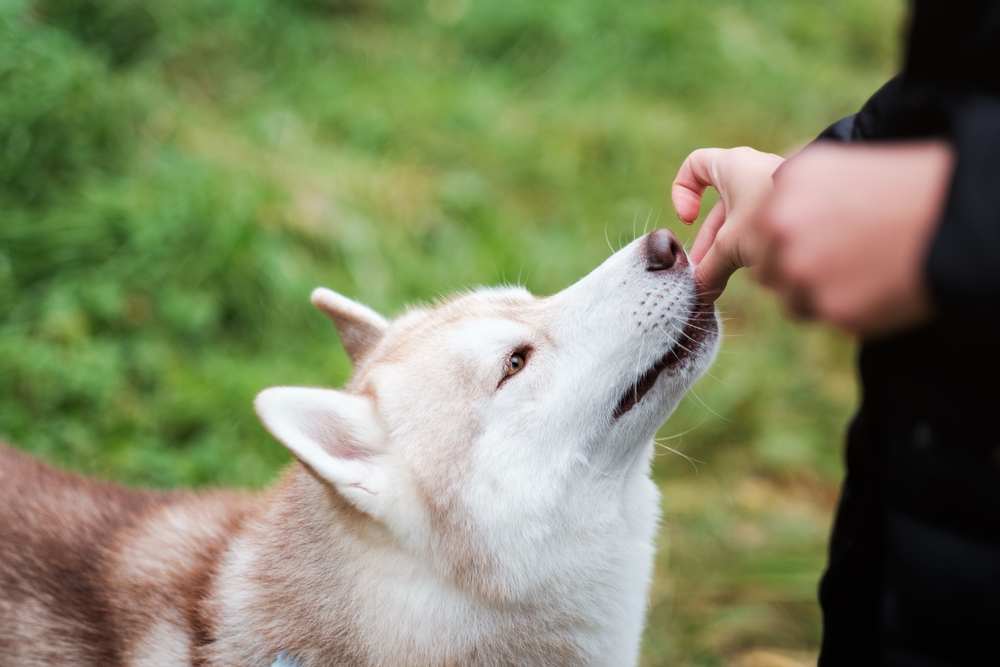
4. The average cost of a routine vet visit is between $50 and $250.
(Care Credit)
We know annual visits are a must if you have a pet. Your pet needs a checkup, routine testing, and vaccinations to stay well. However, there’s the cost to consider. This average figure may be enough to cause sticker shock, but it’s exceedingly better than ignoring an issue before it becomes worse. After all, your pet’s mental and physical well-being is at stake.
5. Connecticut is the most expensive state for a routine vet exam, averaging $93.
(Care Credit)
States vary in their veterinary costs. Many factors play a role, from the size of the resident pet population to the number of veterinarians per capita. Then, throw in the cost of living, and the figures become more understandable. They make a strong case for researching pet insurance with a wellness plan to take the sting out of these prices.

6. There is one dog or cat for every 2.27 people in the United States.
(AVMA)
If you do the math with US Census Bureau numbers and popular pet statistics, you come up with one dog or cat for every 2.27 people. It’s amazing when you think about it. Our animal companions are ubiquitous parts of society, and this number is likely to continue changing as ownership increases.
7. Approximately 2.7% of American households have fish.
(AVMA)
People tend to think of pets as only cats and dogs. However, the scope is far wider. Freshwater fish are a distant third but still an important segment of the market. On the rise are ferrets, rabbits, amphibians, and reptiles. Each animal offers a different experience and requires varying levels of care. However, there’s no denying that it’s a rewarding pursuit.

Dog-Related Statistics
8. About 62 million American households own between 83,739,829 and 88,853,254 dogs.
(AVMA)
This figure represents about 44.5% of American households. The chances are that many dogs live in your neighborhood or apartment building. Many breeds are quite adaptable and can live just about anywhere. With the increasing availability of services, products, and societal acceptance, it couldn’t be a better time to own a dog.
9. The average annual cost of owning a dog is roughly $1,270 to $2,803.
(Synchrony)
Nonetheless, one must consider the decision to get a dog carefully. It involves a significant time and financial commitment. While the range seems wide, remember that the various breeds differ in size and health status. Small ones may eat less food but often live longer, stretching out expenses for a longer period. Understanding your obligation is essential, as money is only one part of the investment.

10. About 73% of dog owners regularly interact with their pets to improve their well-being.
(Get Joy)
Dogs are intelligent and social animals, and they need interaction with their families to thrive. Plus, it’s vital for both you and your dog’s mental well-being. It also makes for a better owner-pet relationship. The time you spend with your dog provides valuable enrichment and mental stimulation to avoid boredom and destructive behavior. We can’t help but feel sorry for the other 27% of people who don’t own a pet!
11. Roughly 65% of dog owners keep up with preventive care.
(Get Joy)
Preventive care is vital for your dog’s welfare. That covers flea and tick prevention, heartworm prevention, routine vet visits, and recommended health procedures like dental cleanings. We want our pups to have a good quality of life. Preventive care helps make it possible. After all, it’s far easier to treat and less stressful to catch health issues early.
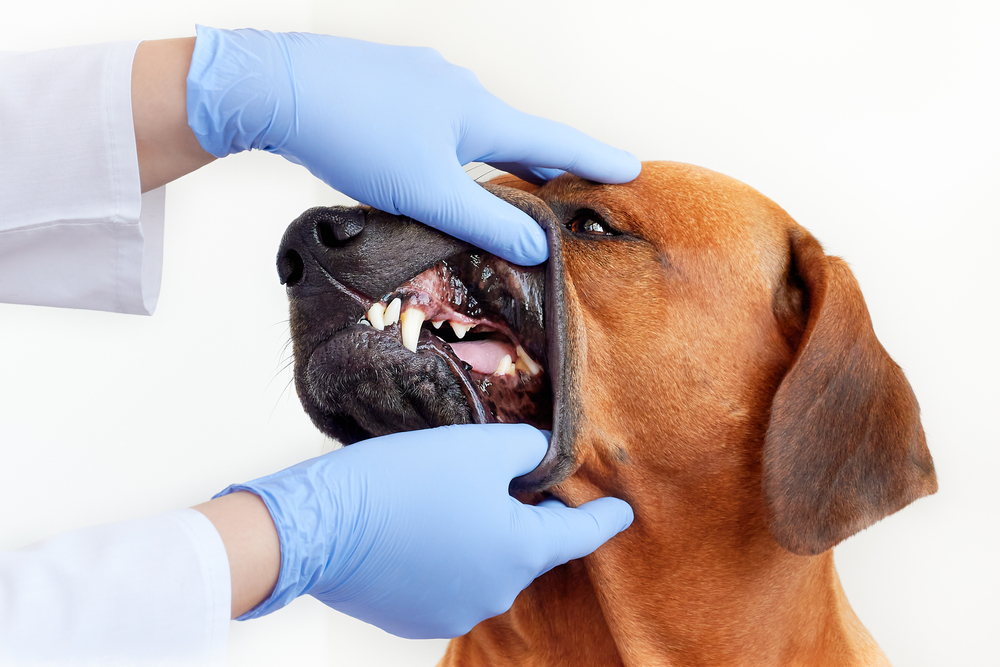
12. Over 67% of dog owners buy their pups a holiday gift during the Christmas season.
(Forbes)
The humanization of the pet market has taken ownership to another level. Many people view them with anthropomorphic terms like “fur babies” or calling themselves “pet parents.” It’s no wonder that their pet’s names appear on their holiday shopping lists. Many probably also wrap the gifts with pretty paper, just like the presents everyone else is receiving.
13. About 29.5% of Delaware dog owners paint their pooches’ nails, the highest in the country.
(Forbes)
One Forbes article contained several revealing statistics compiled by the state. A few caught our eye, including this one from Delaware. We’re not sure if the residents were trying to make a statement, but they did with the nail polish. Delawareans are also most likely to put cologne or perfume on their dogs. It seems, then, that the Diamond State would have the best-outfitted pooches.
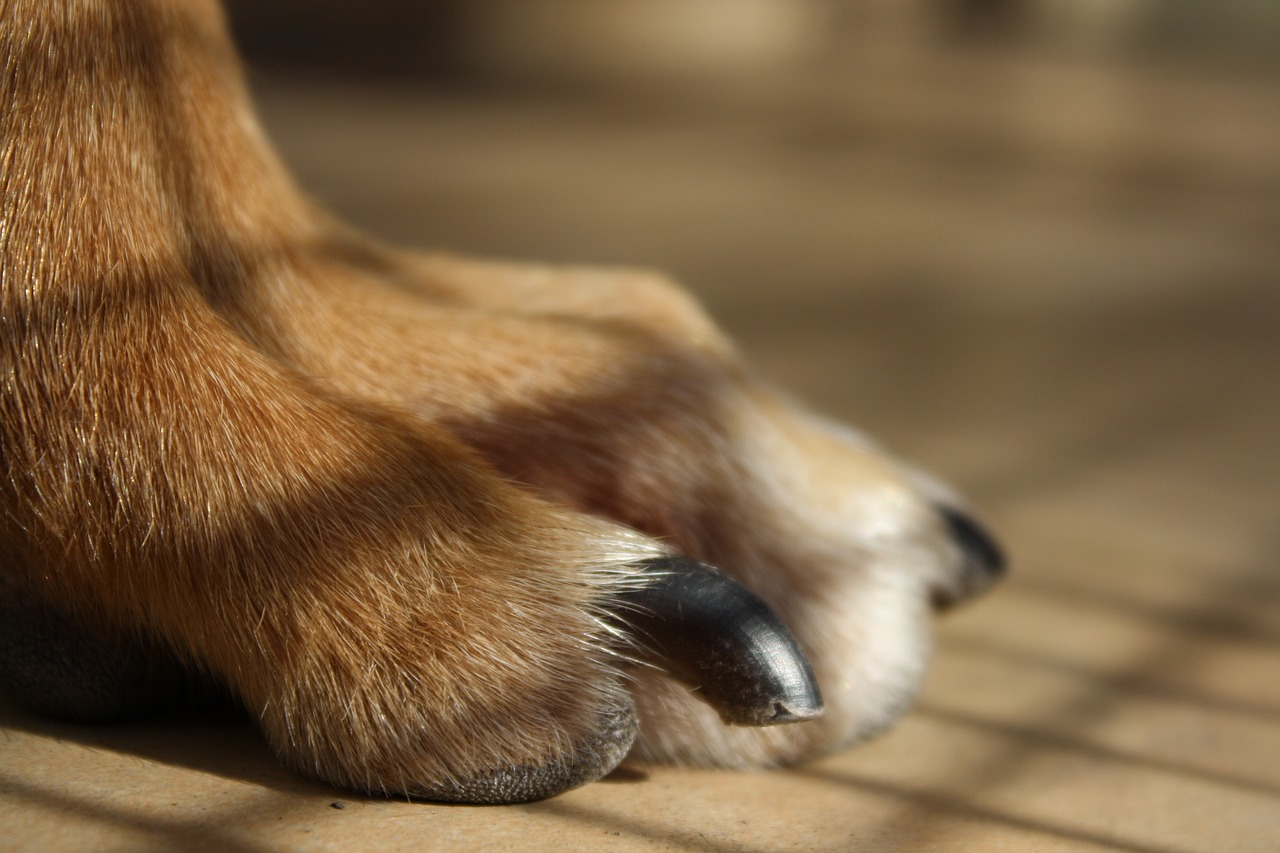
14. Approximately 66.5% of Florida dog owners spend more on grooming and healthcare for their pets than they do themselves.
(Forbes)
Not to be outdone, Floridians unabashedly spoil their dogs by spending more on them than themselves. They also rank second on the perfume scale and those most likely to put their pups in a stroller. Roughly 63% admitted ordering a special treat for their pooch when taking them to a restaurant. Forget the doggie bag!
15. According to one study, the German Shepherd is the second most favorite breed and the top one in 16 states.
(Forbes)
The German Shepherd has an unmistakable presence, as they’re truly gorgeous animals. We weren’t surprised at all to see it on the top of the list in Maine, Kentucky, Nevada, and 13 other states. The breed was a scant 0.1% behind the most popular one in the United States, the Australian Shepherd. That speaks volumes about the desirable traits we like to see in our dogs.

16. Centrale Canine recognizes 379 dog breeds.
(Centrale Canine)
Dogs started their relationship with humans by doing things that came naturally to them, like hunting and chasing pests. People made the most significant changes in them when they began selective breeding for conformation and other characteristics. The only canine species eventually turned into 379 dog breeds and counting. That’s saying nothing about the so-called designer pups, either!
Cat-Related Statistics
17. Roughly 37 million American households own between 60,217,861 and 61,910,686 cats.
(AVMA)
Cats have also endeared themselves to people. Many admire their independence and intelligence. They offer a different, albeit enjoyable, pet experience. Your relationship with a feline is unique. Perhaps more people are realizing what they have to offer. After all, you have 24/7 pest control, and you have a bit more freedom to come and go as you please with a feline friend.
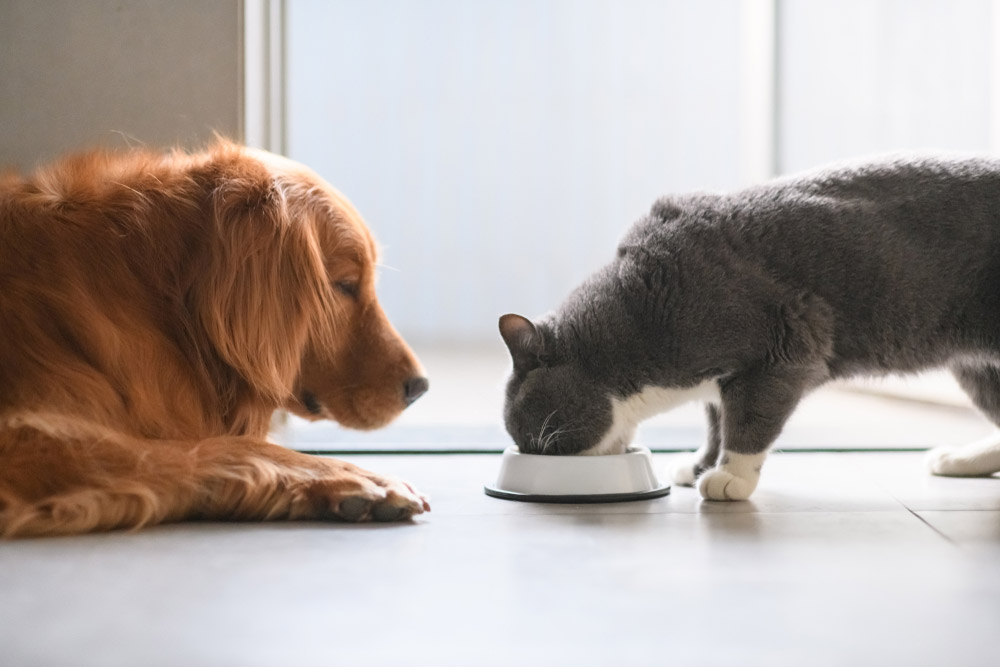
18. The annual cost of owning a cat averages between $961 and $2,487.
(Synchrony)
Caring for a cat is considerably cheaper than a dog. Everything costs less with a smaller animal, from boarding to vet visits. They don’t eat as much as canines, and they also sleep a lot more than canines, which may also account for the disparity between the various average expenses. However, there’s still the litter box and its associated costs to consider.
19. The average number of kitties owned per household is 1.78.
(AVMA)
Interestingly, more people have more than one cat in their household than those with dogs. Perhaps they want a companion for their seemingly lone pet; maybe they aren’t as independent as we may believe. Playtime must be one reason. Otherwise, why are there so many cat videos on YouTube with kittens roughhousing and getting into all kinds of mischief?
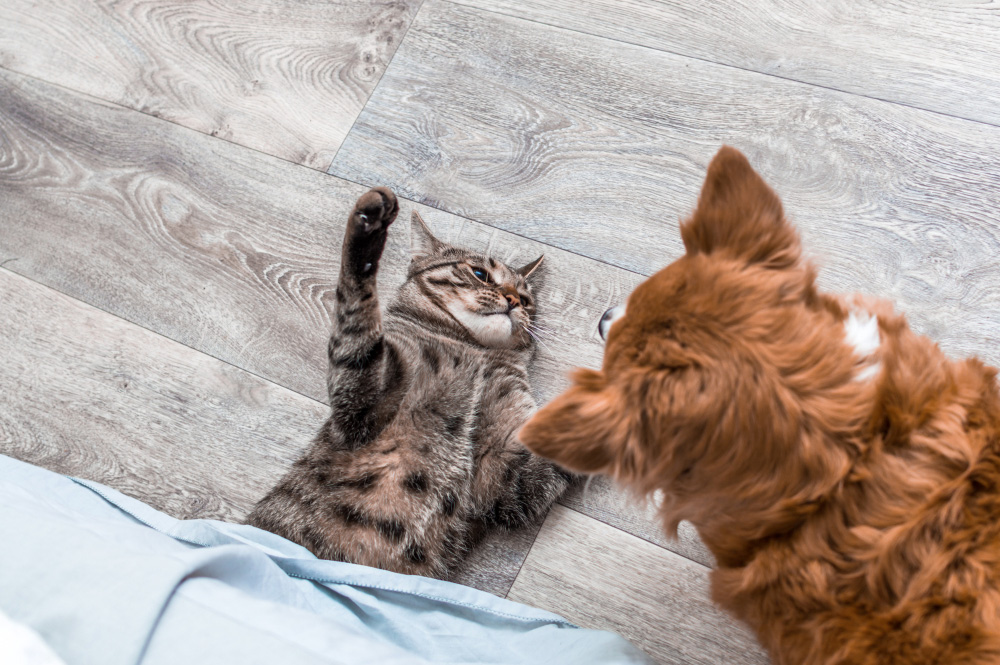
20. The International Cat Association (TICA) recognizes 73 cat breeds.
(TICA)
Felines have one human-assigned job, which they excel at doing: they are superior at pest control. It undoubtedly brought humans and felines together when people developed agriculture. We didn’t need cats to do anything else. The breeds we see today may look different, with selective breeding encouraging specific traits. However, cats are still mousers at heart!
21. About 85% of pet cats are neutered or spayed.
(The Humane Society of America)
We thought this statistic was reassuring considering feral feline populations and the adverse effects on wildlife populations. The number of cats relinquished to shelters has declined in recent years due in part to lower populations of unwanted animals. Sterilization benefits the pets and owners, although it is a decision you should discuss with your vet.
To talk to a vet online now, click on the image or button below:
22. Approximately 40% of new cat owners cited the pandemic as a reason to consider a pet.
(The Humane Society of America)
The pandemic upended our lives as nothing else before it. In the absence of human companionship, people made the best of the situation and invited a pet into their lives. Cats were a welcome addition to many homes. People were better off for having a feline companion to sweep away the loneliness of lockdowns.
23. Forty-five percent of Vermont households have a cat.
(Statista)
You may wonder why we put the spotlight on the Green Mountain State. One of Vermont’s many claims to fame is being the top state for cat ownership. Put it in context with the national figures of 44.6% for dogs and 26% for cats. The state probably couldn’t be more pet-friendly and the purr-fect place for cat fanciers.
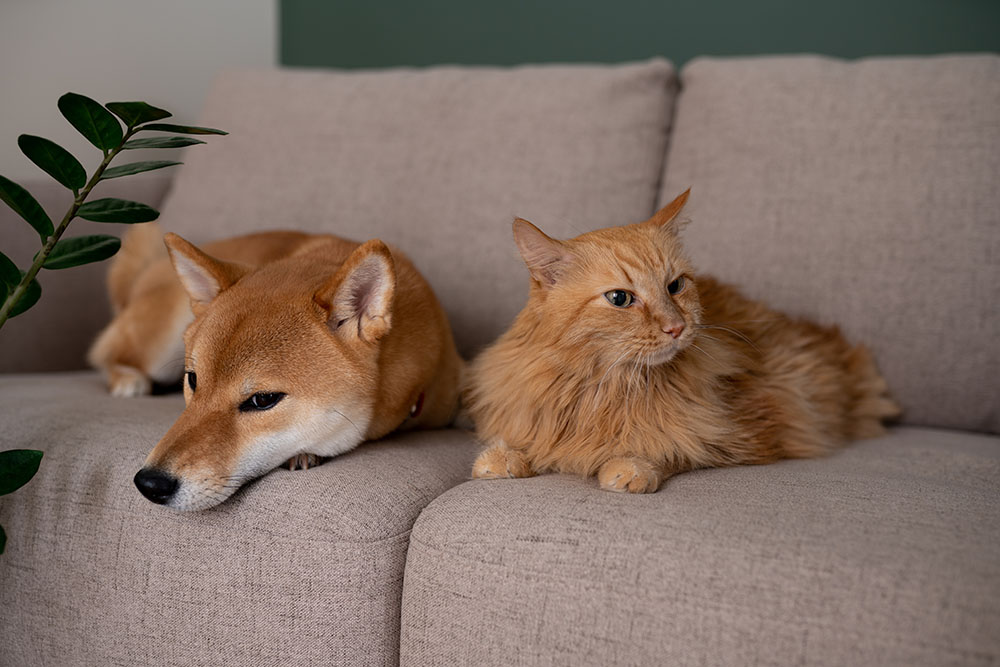
 24. Experts forecast the cat litter market in the United States will reach $1.42 billion by 2025.
24. Experts forecast the cat litter market in the United States will reach $1.42 billion by 2025.
(Statista)
This statistic has more to it than simply the cost of these products. More people keep their cats indoors, creating a greater need for litter. Of course, it’s a diverse industry, with a broad range of items from scoops to deodorants to health-alert products. We’re all in for anything that makes the lives of people and their pets more convenient.
25. The average monthly cost to insure a cat is $19.
(Statista)
It’s sad to think of money being a barrier to necessary pet care. This statistic was a wake-up call to the affordability of pet insurance. It only takes one serious health issue to make it worth the investment. Of course, prices vary by location and other parameters. It’s also another case where owning a cat is less expensive than a dog.
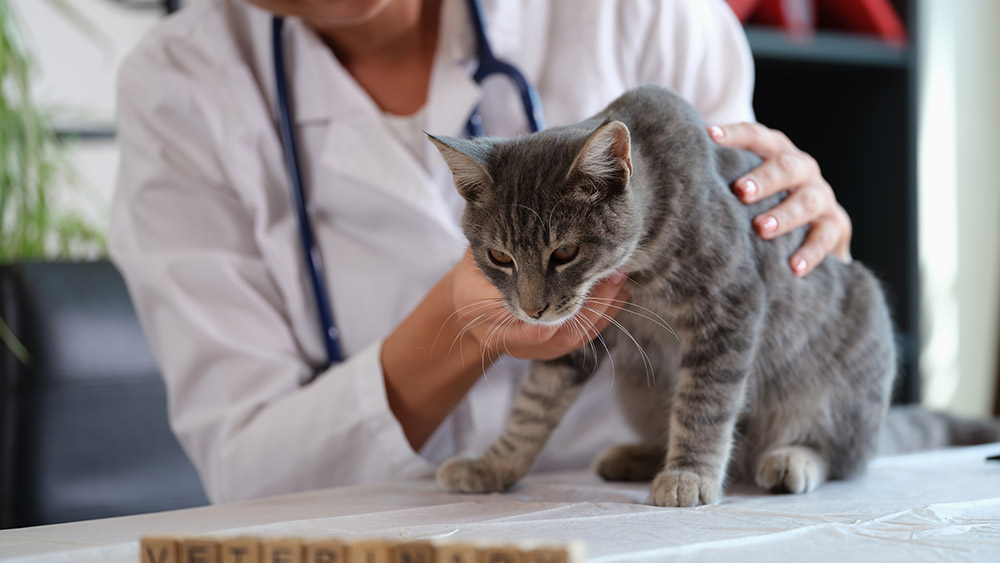
Frequently Asked Questions (FAQ)
Where Do Most People Get Their Pets?
Most people got their pets from rescues or shelters, including 40% of cats and 38% of dogs. (Forbes)
Who Is Most Likely to Have More Than One Pet?
Not surprisingly, rural people were more likely to have more pets, probably because they had more space to house several animals. Fewer rules and regulations regarding multiple pets are another factor. (Forbes)
What Is the Most Important Thing I Can Do to Provide a Good Quality of Life for My Pet?
Your pet’s diet is the best way to ensure a good quality of life. You should choose a product appropriate for your animal companion’s species, life stage, and size. It’s the one thing you shouldn’t skimp. You should also ensure your pet is at a healthy weight and adjust their diet accordingly. (Get Joy)
Conclusion
Pets have changed and enriched our lives since those first encounters thousands of years ago. It was a good day when we opened our homes to dogs and cats—and our exotic pets. Our statistics above have provided a glimpse into our animal companions’ impact on us. With pets comes unconditional love and a friend for life, and it makes sense that they’re changing our lives in such big ways.
- See also: 12 India Pet Industry Statistics to Know
Featured Image Credit: Mary Swift, Shutterstock

